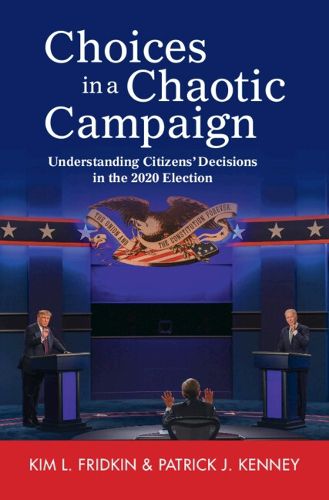Readings Newsletter
Become a Readings Member to make your shopping experience even easier.
Sign in or sign up for free!
You’re not far away from qualifying for FREE standard shipping within Australia
You’ve qualified for FREE standard shipping within Australia
The cart is loading…






In Choices in a Chaotic Campaign, Kim Fridkin and Patrick Kenney explore the dynamic nature of citizens' beliefs and behaviors in response to the historic 2020 presidential campaign. In today's political environment where citizens can effortlessly gather information, it is important to move beyond standard political characteristics and consider the impact of pre-existing psychological predispositions. Fridkin and Kenney argue these predispositions influence assessments of campaign events and issues, and ultimately alter citizens' voting decisions. The book relies on data from an original three-wave panel study of over 4,000 people interviewed in September, October, and immediately after Election Day in November 2020. The timing of the surveys provides the analytical leverage to explore how views of the campaign alter citizens' impressions of the candidates. The book demonstrates that expanding the relevant citizen characteristics to include psychological predispositions increases our ability to understand how campaigns influence voters' decisions at the ballot box.
$9.00 standard shipping within Australia
FREE standard shipping within Australia for orders over $100.00
Express & International shipping calculated at checkout
In Choices in a Chaotic Campaign, Kim Fridkin and Patrick Kenney explore the dynamic nature of citizens' beliefs and behaviors in response to the historic 2020 presidential campaign. In today's political environment where citizens can effortlessly gather information, it is important to move beyond standard political characteristics and consider the impact of pre-existing psychological predispositions. Fridkin and Kenney argue these predispositions influence assessments of campaign events and issues, and ultimately alter citizens' voting decisions. The book relies on data from an original three-wave panel study of over 4,000 people interviewed in September, October, and immediately after Election Day in November 2020. The timing of the surveys provides the analytical leverage to explore how views of the campaign alter citizens' impressions of the candidates. The book demonstrates that expanding the relevant citizen characteristics to include psychological predispositions increases our ability to understand how campaigns influence voters' decisions at the ballot box.